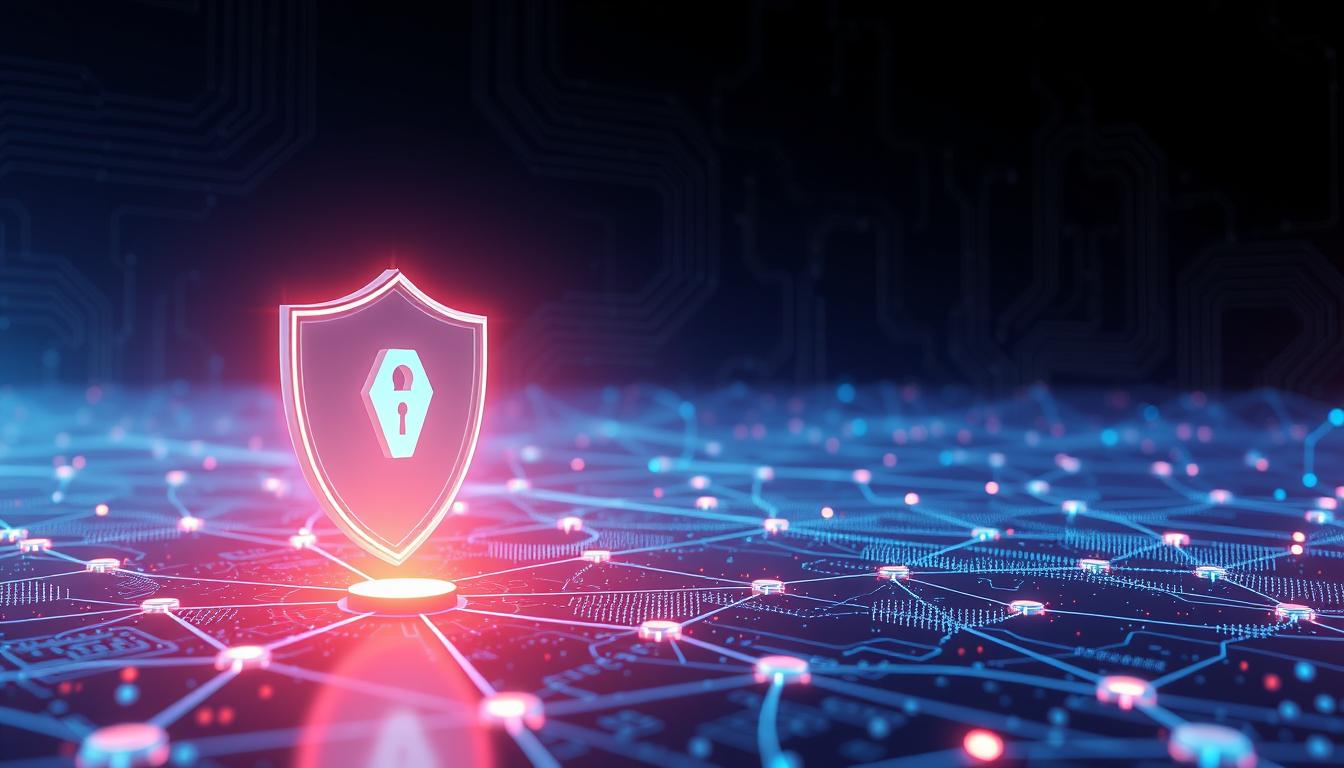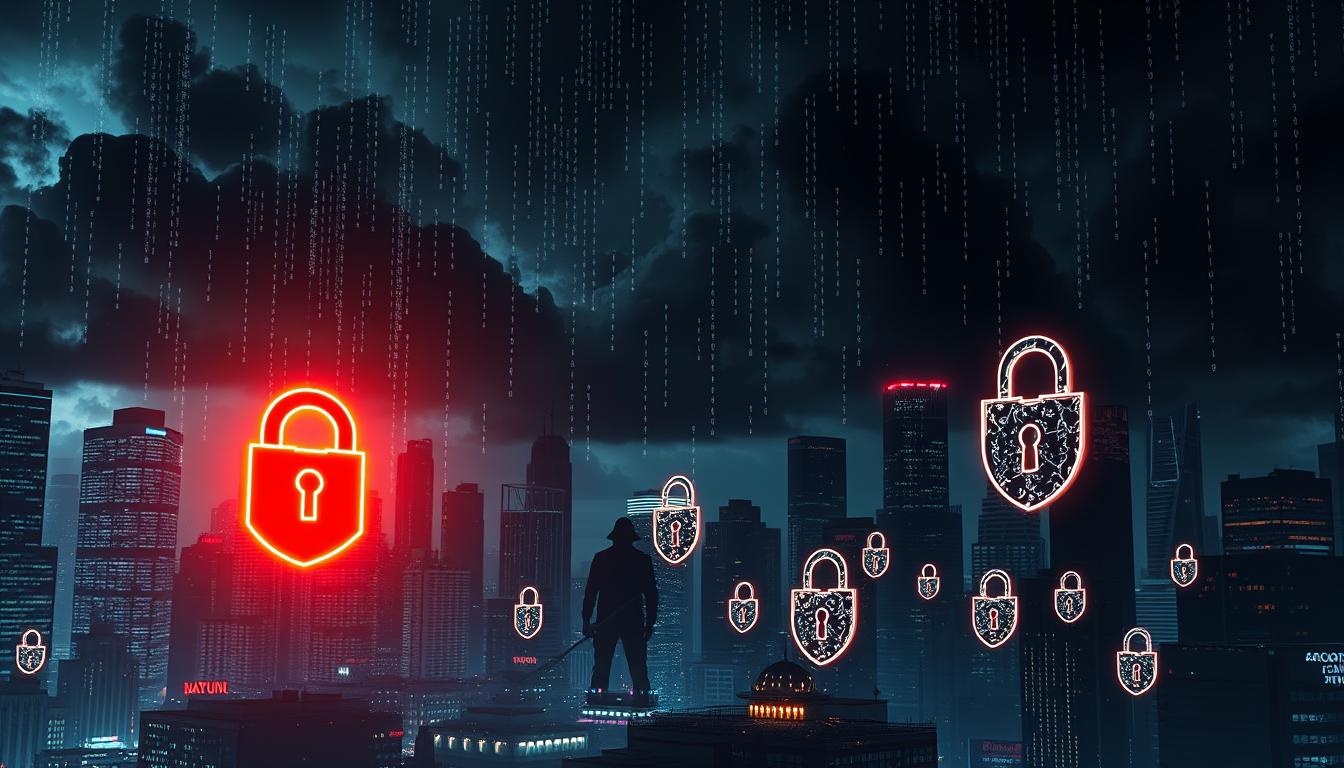In today’s digital landscape, where cyber threats are constantly evolving, organizations need a robust and comprehensive security strategy to protect their valuable assets. Enter Security Information and Event Management (SIEM), a powerful tool that can significantly bolster your cybersecurity defences. This article will explore the core functionalities of SIEM, its importance in safeguarding your organization, and how it can streamline your security operations.
Key Takeaways
- SIEM is a critical component of an effective cybersecurity strategy, providing real-time monitoring, threat detection, and incident response capabilities.
- Effective log management is the foundation of SIEM, allowing organizations to collect, analyze, and correlate security-related data from various sources.
- SIEM empowers security teams to proactively identify and address potential threats, enhancing an organization’s overall security posture.
- SIEM solutions can streamline compliance reporting, making it easier to meet regulatory requirements and demonstrate accountability.
- Integrating SIEM with Security Orchestration, Automation, and Response (SOAR) can further automate and optimize security operations.
What is SIEM?
SIEM, or security information and event management, is a powerful technology that combines the capabilities of security information management (SIM) and security event management (SEM). This dynamic system collects, analyzes, and correlates data from multiple sources across an organization’s IT infrastructure, enabling real-time detection, investigation, and response to security incidents.
Understanding Security Information and Event Management
At its core, SIEM serves as a centralized platform for gathering, processing, and interpreting security-related data. It collects logs, alerts, and events from a variety of network hardware, applications, and security tools, providing a comprehensive view of an organization’s security posture. By analyzing this wealth of information, SIEM solutions can identify patterns, anomalies, and potential threats, empowering security teams to make informed decisions and respond effectively to security incidents.
The key features of SIEM include:
- Log management: Collecting, normalizing, and storing log data from various sources
- Threat detection: Identifying and alerting on suspicious activity and potential security threats
- Incident response: Enabling security teams to investigate and respond to security incidents in a timely manner
- Compliance reporting: Generating reports to demonstrate adherence to industry regulations and standards
- Security analytics: Leveraging machine learning and artificial intelligence to uncover hidden insights and trends
By harnessing the power of SIEM, organizations can enhance their cybersecurity posture, mitigate risks, and stay ahead of the ever-evolving threat landscape.
The Importance of SIEM in Cybersecurity
In today’s complex and dynamic threat landscape, Security Information and Event Management (SIEM) has become a critical component of an effective cybersecurity strategy. SIEM systems play a crucial role in helping organizations detect and respond to security threats more efficiently, reduce the risk of data breaches, and ensure compliance with various industry regulations.
One of the primary benefits of SIEM is its ability to provide a comprehensive view of an organization’s security posture. By collecting and analyzing data from multiple sources, such as network devices, security tools, and application logs, SIEM solutions can identify patterns, anomalies, and potential threats in real-time. This allows security teams to respond quickly and effectively to mitigate the impact of cyber attacks.
Moreover, SIEM’s threat detection capabilities are crucial in today’s threat landscape, where advanced persistent threats (APTs) and sophisticated malware are becoming increasingly common. SIEM systems can leverage machine learning and artificial intelligence to detect and analyze complex threat patterns, enabling security teams to stay ahead of the curve and proactively defend against these evolving threats.
In addition to threat detection, SIEM solutions play a vital role in incident response. By providing a centralized platform for logging and monitoring security events, SIEM enables security teams to quickly investigate and respond to security incidents, reducing the time to contain and resolve the issue. This not only minimizes the potential damage but also helps organizations comply with regulatory requirements and avoid costly penalties.
Furthermore, SIEM’s compliance reporting capabilities are invaluable for organizations that operate in highly regulated industries, such as healthcare, finance, or government. SIEM solutions can generate detailed reports that demonstrate compliance with industry standards and regulations, such as HIPAA, PCI-DSS, or GDPR, helping organizations avoid costly fines and reputational damage.
In conclusion, SIEM is a powerful tool that can significantly enhance an organization’s cybersecurity posture. By providing real-time threat detection, incident response, and compliance reporting capabilities, SIEM enables security teams to proactively defend against cyber threats, reduce the risk of data breaches, and ensure regulatory compliance. As the threat landscape continues to evolve, the importance of SIEM in cybersecurity will only continue to grow.
Log Management: The Foundation of SIEM
At the heart of any robust SIEM (Security Information and Event Management) system lies the critical function of log management. Collecting and analyzing log data from various sources is the foundation upon which SIEM platforms build their cybersecurity capabilities.
Collecting and Analyzing Log Data
SIEM solutions rely on the aggregation and normalization of log data from a wide range of sources, including firewalls, servers, applications, and network devices. This comprehensive data collection allows SIEM platforms to uncover patterns, trends, and potential security incidents that would otherwise remain hidden.
The process of data collection and data analysis is essential for SIEM systems to provide actionable insights and detect threats in real-time. By leveraging advanced analytics and machine learning algorithms, SIEM tools can sift through vast amounts of log data, identify anomalies, and generate meaningful alerts to help security teams respond swiftly to security breaches.
| Data Source | Importance for SIEM |
|---|---|
| Firewalls | Provide critical network traffic and security event data |
| Servers | Offer insights into system and application logs |
| Applications | Deliver application-level event data and user activity logs |
| Network Devices | Contribute to the overall network visibility and security monitoring |
By centrally collecting and analyzing this diverse set of log data, SIEM solutions empower organizations to enhance their cybersecurity posture, detect and respond to threats more effectively, and ensure compliance with regulatory requirements.
Threat Detection and Incident Response
In the ever-evolving landscape of cybersecurity, the ability to detect threats and respond effectively to security incidents is crucial. SIEM (Security Information and Event Management) solutions play a pivotal role in this crucial process, providing real-time monitoring and alerting capabilities.
Real-Time Monitoring and Alerting
SIEM platforms harness a combination of rule-based and behavioral analysis to identify anomalies, suspicious activities, and potential threats in real-time. By continuously monitoring a vast array of log data, these systems can quickly detect and alert security teams to potential security incidents, enabling a swift and proactive response.
- Real-time monitoring of security events and activities
- Behavioral analysis to identify unusual or suspicious patterns
- Rule-based detection to flag known threats and vulnerabilities
- Automated alerting mechanisms to notify security teams of potential incidents
| SIEM Capabilities | Benefits |
|---|---|
| Threat Detection | Quickly identify and respond to security threats and incidents |
| Incident Response | Streamline the incident response process, minimizing the impact of breaches |
| Real-Time Monitoring | Continuously monitor and analyze security events in real-time |
| Automated Alerting | Receive timely notifications of potential security issues |
By leveraging the power of SIEM, organizations can enhance their overall cybersecurity posture, staying one step ahead of the ever-evolving threat landscape.
“SIEM solutions are the cornerstone of effective threat detection and incident response. They empower security teams to proactively identify and address security risks, minimizing the impact of potential breaches.”
Compliance Reporting Made Easy
In today’s heavily regulated business landscape, compliance reporting has become a crucial aspect of any organization’s security strategy. Fortunately, SIEM (Security Information and Event Management) solutions can streamline this process, making it easier than ever to demonstrate adherence to various industry standards and regulations, such as GDPR, HIPAA, and PCI-DSS.
SIEM platforms excel at collecting, aggregating, and analyzing log data from multiple sources within an organization. This comprehensive data collection enables SIEM to generate comprehensive reports that provide clear evidence of an organization’s compliance with regulatory requirements. By automating this process, SIEM eliminates the need for manual data gathering and report generation, saving valuable time and resources.
Moreover, SIEM’s real-time monitoring and alerting capabilities ensure that any potential compliance breaches are quickly identified and addressed, allowing organizations to maintain a proactive approach to regulatory compliance. This not only safeguards the organization from potential fines and penalties but also enhances its overall security posture.
To further simplify compliance reporting, many SIEM solutions offer pre-built templates and dashboards tailored to specific industry regulations. These customizable tools make it easy for organizations to generate comprehensive reports that address their unique compliance needs, streamlining the entire process and ensuring a seamless auditing experience.
By leveraging the power of SIEM, organizations can transform their compliance reporting from a tedious and time-consuming task into a streamlined, efficient, and reliable process. This not only enhances an organization’s security posture but also demonstrates its commitment to regulatory compliance, instilling confidence in its stakeholders and regulatory bodies.
Security Analytics: Proactive Approach to Cybersecurity
In the evolving cybersecurity landscape, SIEM solutions are increasingly integrating advanced security analytics capabilities, including machine learning and artificial intelligence. These innovative technologies empower security teams to anticipate and mitigate potential risks more effectively.
Leveraging Machine Learning and AI
Machine learning and artificial intelligence (AI) are transforming the way SIEM systems approach security analytics. By analyzing vast amounts of data, these advanced technologies can identify complex threats and anomalies that might have gone undetected by traditional rule-based systems.
SIEM solutions with machine learning and AI capabilities can:
- Detect advanced persistent threats (APTs) and other sophisticated attacks
- Identify insider threats and unusual user behavior patterns
- Automatically correlate and prioritize security events for faster incident response
- Predict and mitigate potential security risks before they can cause damage
By leveraging the power of security analytics, SIEM tools can provide a more proactive and comprehensive approach to cybersecurity, helping organizations stay one step ahead of evolving threats.
“SIEM solutions with advanced security analytics are essential for organizations that want to stay ahead of the curve in today’s dynamic threat landscape.”

| Feature | Benefit |
|---|---|
| Automated Threat Detection | Identify complex threats and anomalies in real-time |
| Incident Response Optimization | Prioritize and correlate security events for faster mitigation |
| Predictive Analytics | Anticipate and prevent potential security risks |
SIEM and SOAR Integration
Unlocking the power of cybersecurity requires a holistic approach. The integration of SIEM (Security Information and Event Management) with SOAR (Security Orchestration and Automated Response) technologies can elevate an organization’s security posture to new heights. This strategic alliance enables security teams to respond to threats more effectively and efficiently.
SOAR automates the incident response process, allowing security analysts to triage, investigate, and mitigate threats with unprecedented speed. By seamlessly integrating SOAR with SIEM, organizations can leverage the comprehensive data collection and analysis capabilities of SIEM to feed into SOAR’s automated workflows. This synergy empowers security teams to make data-driven decisions, respond to incidents promptly, and minimize the impact of potential breaches.
The integration of SIEM and SOAR offers a multitude of benefits, including:
- Streamlined security orchestration and automated response to threats
- Improved incident response capabilities through automated playbooks and workflows
- Enhanced threat detection by correlating and analyzing data from various sources
- Increased operational efficiency by reducing manual, repetitive tasks
- Comprehensive security visibility across the entire IT infrastructure
By harnessing the synergies between SIEM and SOAR, organizations can elevate their cybersecurity posture, mitigate risks more effectively, and stay one step ahead of evolving threats. This dynamic integration empowers security teams to be more proactive, responsive, and strategic in their approach to protecting valuable assets and ensuring resilience in today’s rapidly changing digital landscape.
User and Entity Behavior Analytics (UEBA)
In the ever-evolving landscape of cybersecurity, organizations are constantly seeking innovative ways to enhance their defenses. One such tool that has gained significant traction is User and Entity Behavior Analytics (UEBA). This powerful capability, often integrated within SIEM (Security Information and Event Management) solutions, enables security teams to identify unusual user or entity behavior, which may indicate the presence of insider threats or other security risks.
Identifying Insider Threats and Anomalies
UEBA leverages advanced analytics and machine learning algorithms to establish a baseline of normal user and entity behavior within an organization. By continuously monitoring and analyzing user activities, login patterns, and other relevant data, UEBA can detect anomalies that deviate from the established norm. This allows security professionals to swiftly identify and address potential insider threats, such as unauthorized access, data exfiltration, or suspicious network activities.
Through the use of UEBA, organizations can gain valuable insights into user and entity behavior, empowering them to take proactive measures against a wide range of security risks. By combining the power of SIEM and UEBA, security teams can enhance their overall cybersecurity posture, strengthening their ability to detect, investigate, and respond to threats in a timely and effective manner.
| Feature | Benefit |
|---|---|
| Behavior Baselines | Establish normal user and entity behavior patterns to identify anomalies |
| Anomaly Detection | Quickly identify suspicious activities that deviate from the norm |
| Insider Threat Monitoring | Detect and mitigate potential insider threats before they cause harm |
| Intelligent Alerting | Receive real-time notifications of potential security incidents |
By harnessing the power of UEBA, organizations can significantly enhance their ability to identify and respond to insider threats, ultimately strengthening their overall SIEM-driven cybersecurity strategy.
SIEM Deployment Options
When it comes to deploying a SIEM solution, organizations have several options to consider. From on-premises installations to cloud-based platforms and hybrid approaches, each deployment model offers unique advantages and considerations. Choosing the right SIEM deployment strategy is crucial for enhancing cybersecurity and aligning with an organization’s specific needs.
On-Premises SIEM
The traditional on-premises SIEM deployment involves installing the software and hardware within an organization’s own data center. This approach offers greater control over the infrastructure, data, and security protocols. However, it also requires dedicated IT resources for installation, maintenance, and ongoing management.
Cloud-Based SIEM
The cloud-based SIEM model leverages the scalability and flexibility of cloud computing. Organizations can opt for a cloud-based solution, where the SIEM platform is hosted and managed by the service provider. This model often reduces the burden of infrastructure management and allows for rapid deployment and scalability.
Hybrid SIEM Deployment
The hybrid SIEM deployment combines the benefits of on-premises and cloud-based approaches. In this model, organizations may choose to have certain SIEM components or data sources hosted on-premises, while leveraging the cloud for additional storage, processing, or analytical capabilities. This flexibility allows organizations to strike a balance between control and scalability.
When selecting a SIEM deployment option, organizations should carefully consider factors such as data sensitivity, compliance requirements, IT infrastructure, and resource availability. By understanding the pros and cons of each deployment model, businesses can make an informed decision and implement a SIEM solution that enhances their overall cybersecurity posture.
“The choice of SIEM deployment model should be driven by the organization’s specific needs, resources, and security objectives.”
Choosing the Right SIEM Solution
Selecting the optimal SIEM (Security Information and Event Management) solution for your organization requires a meticulous assessment of various factors. The size and complexity of your environment, your specific security requirements, the level of integration with existing tools, and the vendor’s reputation and support are all critical considerations.
Factors to Consider
When evaluating SIEM solutions, it’s essential to consider the following key factors:
- Scalability: Assess the solution’s ability to grow and adapt as your organization’s needs evolve, ensuring it can handle increasing data volumes and security complexities.
- Ease of Use: Prioritize a SIEM solution that offers an intuitive and user-friendly interface, streamlining the learning curve for your security team.
- Threat Detection and Response: Evaluate the solution’s capabilities in detecting and responding to security threats, including its real-time monitoring and alerting functions.
- Integrations: Assess the SIEM solution’s ability to seamlessly integrate with your existing security tools and infrastructure, ensuring a cohesive and efficient security ecosystem.
- Vendor Reputation and Support: Research the vendor’s track record, customer satisfaction, and the quality of their technical support to ensure a reliable and responsive partnership.
By carefully considering these factors, organizations can make an informed decision in selecting the SIEM solution that best meets their security requirements and aligns with their long-term goals.
| Evaluation Criteria | Importance | Vendor A | Vendor B | Vendor C |
|---|---|---|---|---|
| Scalability | High | 4 | 3 | 5 |
| Ease of Use | Medium | 4 | 4 | 3 |
| Threat Detection and Response | High | 4 | 5 | 4 |
| Integrations | High | 3 | 4 | 4 |
| Vendor Reputation and Support | High | 4 | 5 | 4 |
By carefully evaluating these factors, organizations can make an informed decision in selecting the SIEM solution that best meets their security requirements and aligns with their long-term goals.
“Choosing the right SIEM solution is crucial for effective threat detection, incident response, and compliance reporting. Thorough evaluation of the key factors ensures a seamless integration with your security ecosystem.”
Streamlining Security Operations
As organizations navigate the complex cybersecurity landscape, the need for efficient and effective security operations has become increasingly paramount. Fortunately, SIEM (Security Information and Event Management) solutions can play a pivotal role in streamlining security operations, improving the productivity of security teams, and enhancing overall cybersecurity posture.
By implementing a robust SIEM system, organizations can automate numerous time-consuming tasks, freeing up security professionals to focus on high-priority threats and strategic initiatives. SIEM platforms provide centralized visibility, allowing security teams to monitor and analyze security-related events from a single pane of glass. This holistic view enables faster incident detection, investigation, and response, ultimately enhancing the efficiency and productivity of security operations.
Moreover, SIEM solutions often incorporate advanced analytics and machine learning capabilities, enabling security teams to identify patterns, detect anomalies, and uncover potential threats more effectively. This proactive approach to security operations allows organizations to stay one step ahead of cyber adversaries, reducing the risk of successful attacks and minimizing the impact of security incidents.
“By streamlining security operations with SIEM, organizations can enhance their overall cybersecurity posture and better protect their critical assets.”
In today’s dynamic threat landscape, the ability to optimize security operations is crucial. SIEM solutions offer a powerful way to achieve this goal, providing security teams with the tools and insights they need to make informed decisions, respond swiftly to incidents, and ultimately, improve the efficiency and productivity of their cybersecurity efforts.
Conclusion
In conclusion, SIEM, or Security Information and Event Management, has emerged as a pivotal tool in the realm of cybersecurity. By providing real-time analysis, threat detection, incident response, and compliance reporting, SIEM has become indispensable for organizations navigating the complex and ever-evolving threat landscape. As the importance of robust cybersecurity continues to grow, the implementation of SIEM should be a top priority for organizations seeking to safeguard their valuable assets.
Throughout this article, we’ve explored the capabilities of SIEM, from log management and threat detection to security analytics and SOAR integration. The insights gained from SIEM can empower security teams to make informed decisions, respond to incidents swiftly, and maintain regulatory compliance. By leveraging the power of SIEM, organizations can bolster their overall cybersecurity posture and stay one step ahead of potential threats.
As the digital world continues to evolve, the need for comprehensive SIEM solutions will only increase. Organizations that embrace SIEM as a cornerstone of their security strategy will be better equipped to protect their data, maintain business continuity, and instill confidence in their stakeholders. The journey towards enhanced cybersecurity begins with the implementation of a robust SIEM solution, and the rewards of this investment can be immeasurable.



